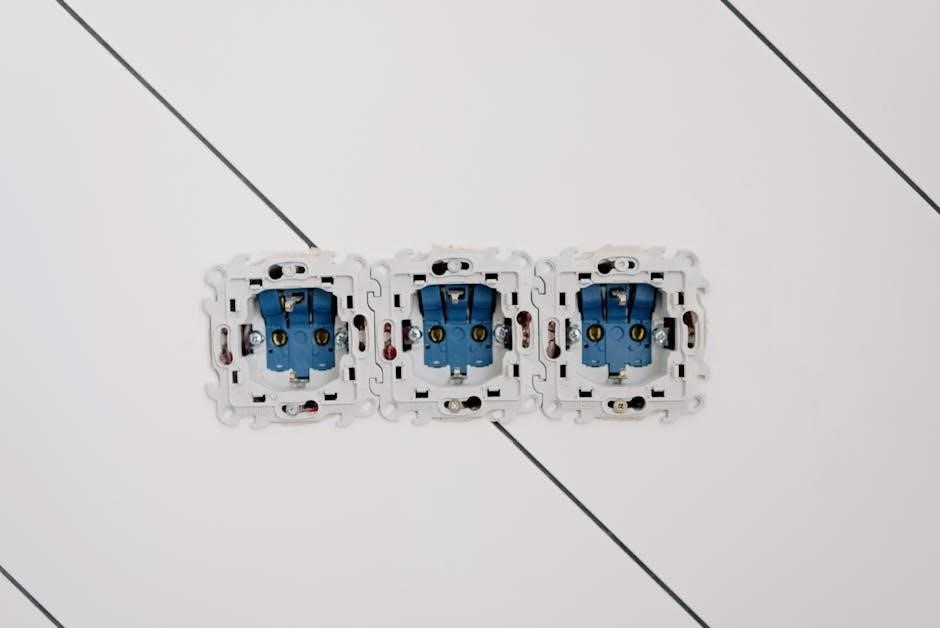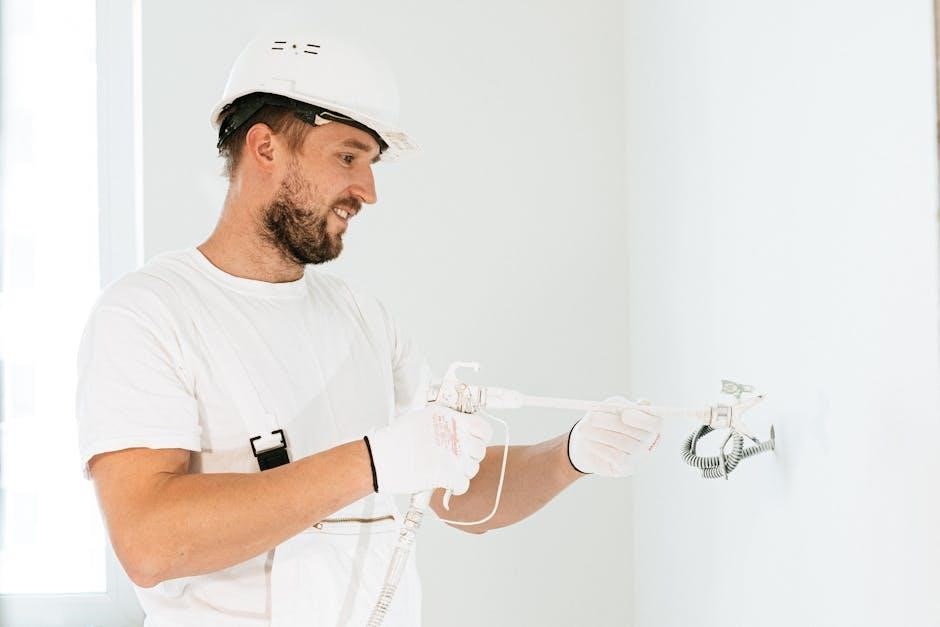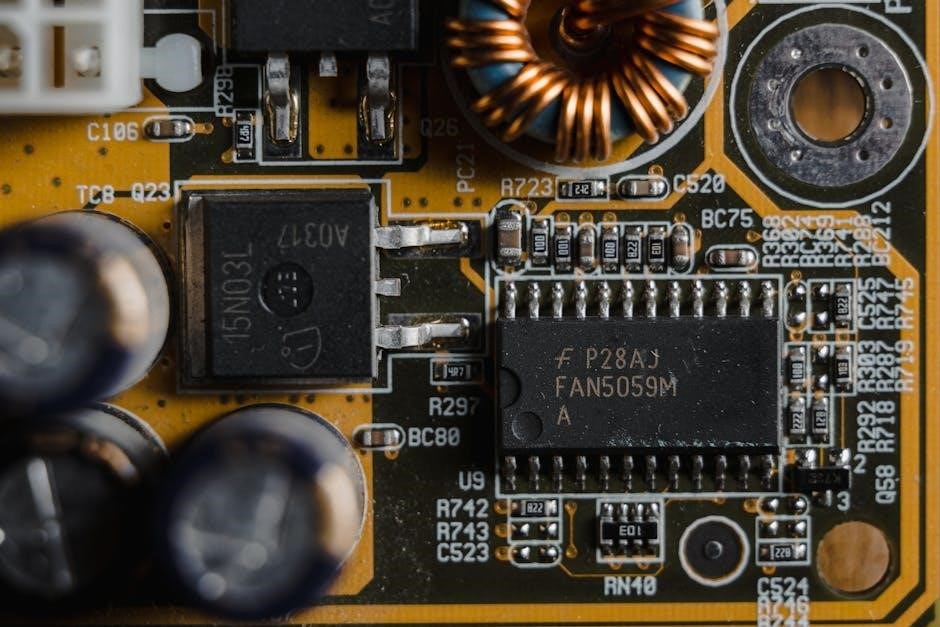IEE Wiring Regulations 19th Edition: A Comprehensive Guide
The IEE Wiring Regulations, a cornerstone for electrical installations in the UK, are constantly evolving. This guide provides an overview of the anticipated updates and key areas to expect in future editions.
The IEE Wiring Regulations, officially known as BS 7671, are the national standard in the United Kingdom for electrical installation. These regulations ensure the safety and proper functioning of electrical wiring systems. Originating in the late 19th century, they have evolved through numerous editions, adapting to technological advancements and emerging safety concerns. Initially published by the Institution of Electrical Engineers (IEE), now the Institution of Engineering and Technology (IET), they didn’t become a recognized British Standard until the 16th Edition in 1992.
These regulations are co-published by the IET and the British Standards Institution (BSI). They serve as a comprehensive guide for electrical installers, designers, and inspectors. Compliance with BS 7671 is crucial for ensuring electrical safety and meeting legal requirements in the UK. The regulations cover a wide range of topics, including cable selection, protection devices, earthing, bonding, and special installations. Staying updated with the latest edition and amendments is essential for electrical professionals to maintain competence and adhere to industry best practices.

Current Status of the 19th Edition
Currently, there’s no confirmed release date for the 19th Edition of the Wiring Regulations. The IET hasn’t announced specific plans. Amendment 4 to the 18th Edition is due in 2026.
No Confirmed Release Date
Contrary to some rumors circulating online, there is currently no confirmed release date for the 19th Edition of the IEE Wiring Regulations. The Institution of Engineering and Technology (IET) has not made any official announcements regarding its publication. Electrical professionals should be wary of unofficial sources claiming otherwise.
The electrical industry is eagerly awaiting any news regarding the 19th Edition, but for now, the focus remains on the current 18th Edition and its upcoming amendments. It’s crucial to rely on verified information from the IET and British Standards Institution (BSI) to stay informed.
Be cautious about websites with misleading information. The most accurate details will come from the official channels. The next major update is Amendment 4 to the 18th Edition, due in 2026.
Amendment 4 to the 18th Edition
While the electrical industry awaits any potential news regarding a 19th Edition, the immediate focus is on Amendment 4 to the 18th Edition of the IEE Wiring Regulations. This amendment is scheduled for publication in 2026 and will bring important changes to the current regulations, BS 7671:2018.
Amendment 4 will incorporate changes to harmonized standards at the European level, reflecting technological advancements and evolving safety requirements. Electrical installers need to stay informed about these changes to ensure compliance and maintain safe practices.
Until Amendment 4 is published, electrical installers need to have a copy of Amendment 2 (2022) and Amendment 3 (2024) to be up-to-date. These amendments should be readily available for reference. The changes in the amendment are there to help the safety of all electrical workers.

Key Areas Expected to be Covered in Future Editions
Future editions of the Wiring Regulations are expected to address emerging challenges and incorporate technological advancements. Key areas of focus will likely include renewable energy, EV charging, surge protection, efficiency, and smart tech.
Renewable Energy Integration
The integration of renewable energy sources, such as solar photovoltaic (PV) systems and wind turbines, into electrical installations is rapidly increasing. Future editions of the Wiring Regulations are expected to provide comprehensive guidelines for the safe and efficient connection of these systems to the grid.
This will likely involve addressing issues such as grid stability, protection against overcurrents and overvoltages, and the proper selection of components and cabling. Furthermore, the regulations may include specific requirements for energy storage systems used in conjunction with renewable energy sources.
Considerations for earthing and bonding arrangements, as well as isolation and switching procedures, will also be crucial to ensure the safety of both installers and end-users. The updated regulations will aim to facilitate the widespread adoption of renewable energy technologies while maintaining the highest standards of electrical safety.
Electric Vehicle Charging
The proliferation of electric vehicles (EVs) necessitates updated regulations regarding the installation of EV charging infrastructure. Future editions of the Wiring Regulations are anticipated to provide detailed guidance on the safe and compliant installation of EV charging points in various locations, including homes, workplaces, and public spaces.
This will likely encompass requirements for earthing arrangements, overcurrent protection, residual current devices (RCDs), and the selection of appropriate cables and connectors. Furthermore, the regulations may address issues related to load management and the impact of EV charging on the electrical grid.
Specific guidance on the installation of smart charging systems, which can optimize charging based on grid conditions and user preferences, may also be included. The aim is to ensure that EV charging is safe, efficient, and does not compromise the integrity of the existing electrical infrastructure. Compliance with these regulations is essential for promoting the widespread adoption of EVs.
Surge Protection
The increasing reliance on sensitive electronic equipment makes surge protection a critical aspect of electrical installations. Future editions of the Wiring Regulations are expected to emphasize the importance of surge protection devices (SPDs) to safeguard against transient overvoltages caused by lightning strikes, switching operations, and other electrical disturbances.
The regulations will likely provide guidance on the selection, installation, and coordination of SPDs in different types of electrical systems. This may include specifying the appropriate impulse protection level (Up) for SPDs based on the risk assessment of the installation and the sensitivity of the equipment being protected.
Detailed requirements for the location of SPDs, earthing arrangements, and the coordination of SPDs with other protective devices, such as circuit breakers and RCDs, are also anticipated. The goal is to ensure that surge protection is effectively implemented to minimize the risk of damage to electrical equipment and maintain the reliability of electrical systems. Staying current with these regulations is crucial.
Energy Efficiency
With growing concerns about climate change and the need to reduce carbon emissions, energy efficiency is becoming an increasingly important focus in electrical installations. Future editions of the Wiring Regulations are expected to incorporate measures to promote energy-efficient designs and practices.
This may include requirements for the selection of energy-efficient electrical equipment, such as lighting, motors, and transformers. The regulations could also provide guidance on optimizing cable sizing to minimize energy losses and promoting the use of smart controls to manage energy consumption.
Furthermore, the regulations may address the integration of renewable energy sources, such as solar panels and wind turbines, into electrical installations, encouraging the use of on-site generation to reduce reliance on the grid. By incorporating energy efficiency measures, the Wiring Regulations can contribute to reducing the environmental impact of electrical installations and lowering energy costs for consumers. Staying updated is vital.
Smart Technology Integration
The increasing prevalence of smart technologies in homes and businesses necessitates their inclusion within the scope of future Wiring Regulations. Smart devices, automation systems, and the Internet of Things (IoT) are transforming how we interact with electrical installations, demanding updated safety and performance standards.
Future regulations may cover aspects such as secure communication protocols, data privacy considerations, and interoperability between different smart devices. Guidelines for installing and configuring smart home systems, including lighting controls, energy management systems, and security systems, are also likely to be incorporated.
Moreover, the regulations may address the potential risks associated with cyber security vulnerabilities in smart devices and provide recommendations for mitigating these risks. By integrating smart technology considerations, the Wiring Regulations can ensure that electrical installations remain safe, reliable, and adaptable to the evolving technological landscape. Staying informed through resources like the IET and BSI websites is crucial for professionals.

Staying Updated with Wiring Regulations
Staying current with the latest Wiring Regulations is crucial for electrical professionals. Official sources offer the most accurate and timely information on changes and amendments to the standards.
Official IET and BSI Websites
To stay informed about the latest updates and amendments to the wiring regulations, regularly check the official websites of the Institution of Engineering and Technology (IET) and the British Standards Institution (BSI). These organizations are responsible for the publication and maintenance of wiring regulations and will provide the most accurate information.
The potential release of the 19th Edition of the Wiring Regulations BS 7671 in June 2025 is eagerly anticipated by the electrical industry. It will introduce stricter safety measures, address emerging technologies, promote sustainability, and emphasize data security.
The IET has not released any plans to publish the 19th edition in the near future. The 19th edition would follow the upcoming amendment 4, which is due to be released in 2026.

Importance of Compliance
Compliance with the latest standards is not just about following rules; it’s about ensuring the safety and well-being of everyone using electrical installations, adhering to IEE wiring regulations.
Ensuring Safety and Well-being
Adhering to the IEE Wiring Regulations is paramount for ensuring the safety and well-being of individuals who interact with electrical installations. Compliance minimizes the risk of electrical shocks, fires, and other hazards associated with faulty or outdated wiring systems.
These regulations incorporate best practices and technological advancements to enhance electrical safety. By following the guidelines outlined in the IEE Wiring Regulations, electrical professionals can create safe and reliable installations that protect occupants from potential harm.
Compliance ensures that electrical systems are designed, installed, and maintained to meet the highest safety standards. This includes proper grounding, insulation, and overcurrent protection, all crucial in preventing electrical accidents.
Furthermore, adherence to the IEE Wiring Regulations promotes public confidence in the safety of electrical installations. Building owners, tenants, and other stakeholders can rest assured that their electrical systems meet the necessary safety requirements, safeguarding lives and property.
Staying up-to-date with the latest amendments and revisions to the IEE Wiring Regulations is essential for maintaining a safe electrical environment.
